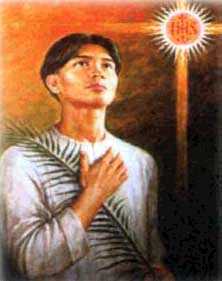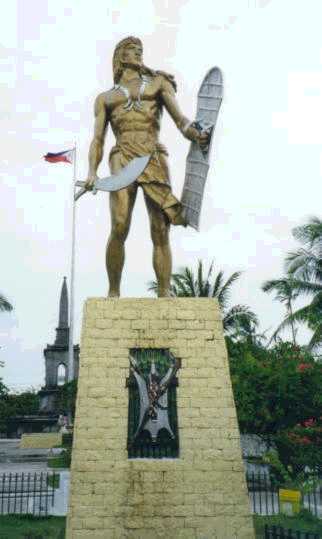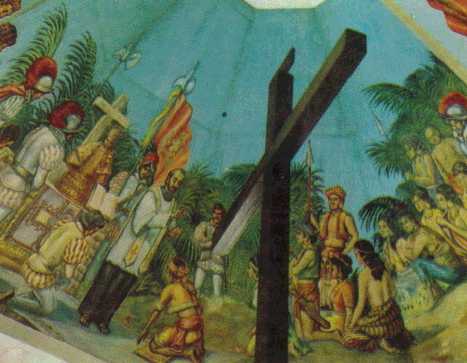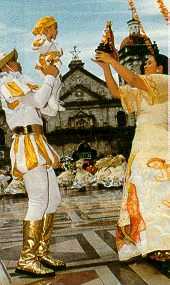Cultural Heritages
Welcome!
The Power of Holy Mass
Promises of the Holy Rosary
The Chaplet of Divine Mercy
Confession Guide
Crisis
Hope
Don't be afraid
Move on
Be Happy
Be Generous
Amazing You
Heart Talk
My Essay
My Writings
My Books
My Messages
My Songs
My Cebuano's pride
My Files
My Link
Suroy Sugbo 2008
Lapu-Lapu City Photo Gallery
The Author
My Archive
Blessed is he who considers the poor; The Lord will deliver him in time of trouble. The Lord will preserve him and keep him alive, And he will be blessed on the Earth; You will not deliver him to the will of his enemies. The Lord will strengthen him on his bed of illness; You will sustain him on his sickbed. I said, "Lord, be merciful to me; Heal my soul, for I have sinned against You."

Blessed Pedro Calungsod, young Catechist, Migrant, Missionary, Martyr. Educated by the Jesuits in the Visayas, Pedro could read, write and speak Visayan, Spanish, and Chamorro, paint, draw, sing, and worked as a carpenter. Teenage catechist who worked with Spanish Jesuit missionaries to the violent Chamarros in the Ladrones Islands (modern Marianas) in 1668. Because he was a Christian on a mission to catechize the Chamorros, and Baptisms, Calungsod was murdered by two natives. He died trying to defend Father Diego Luis de San Vitores.

Filipino Chief Lapu-Lapu. On 27 April 1521, the spanish conquering explorer Ferdinand Magellan lost his life in a battle while attempting to make a landing in Punta Engano. Punta Engano is the north-eastern corner of Mactan Island. In 1866 a memorial , the Magellan Marker, was erected to commemorate the spot where he fell. A few metres away, a statue of Chief Lapu-Lapu, complete with sword and shield, keeps the memory of this popular hero alive. The historic battle for Mactan (Kadaugan sa Mactan) is re-enacted each year on the beach at Magellan Bay by amateur actors, providing a sponsor can be found.


MAGELLAN'S CROSS. The cross that we see at the kiosk is but a replica of the wooden cross Ferdinand Magellan and his men planted in Cebu on 14 April 1521 to mark the beginning of the Christianization of the island. The original was destroyed when Cebuanos turned against the Spaniards 17 days later. There is no record as to when the present cross was erected though there are allusions that this was done around 1565.

During the early part of the Spanish era, Cebu was the effective capital of the country, which in turn was a province of Mexico. (The capital was later moved to Manila, which was more easily defensible against sea attack.) It continued to prosper as a trading port, and to this day Cebu is the most ethnically diverse area in the country, with large Chinese, Spanish, and Malayan populations (not to mention more recent German and American arrivals). In more recent times, Cebu was the only province which consistently opposed the rule of President Marcos. Abandoned by the national government during that 20-year period, Cebu's infrastructure suffered, but Cebu businesses thrived on self-reliance and ingenuity. Due to the virtues instilled during those difficult times, after the People's Revolution Cebu emerged as the most dynamic metro area in the country, a distinction it still holds, with growth rates generally twice as high as the national average.
Cebu and Mactan are rich in historical significance. From around 800 AD Cebu harbor was already an import trading port for Chinese, Islamic, and Malayan goods. In 1521, Ferdinand Magellan discovered the Philippines and eventually found his way to Mactan. Due to a dispute of uncertain nature, the Spaniards incurred the ire of local chieftain Lapu-lapu, who killed Magellan in The Battle of Mactan - arguably the first case of an Asian fighting European invaders. Thus, although the Magellan Expedition is credited with the first circumnavigation of the globe, Magellan the man died and remained in Mactan. (It is said in some chronicles that Magellan's expedition included a Cebuano-speaking crewman, who must have earlier wandered across Asia, the Near East, and the Mediterranean before joining the expedition in Spain. When the expedition reached Cebu, this crewman -Cebuano - became the first person to actually complete a tour of the world.
White sand beaches found in Cebu and Mactan Island.

For God so loved the world that he gave his one and only son, that whoever believes in him shall not perish but have eternal life" John 3:16
